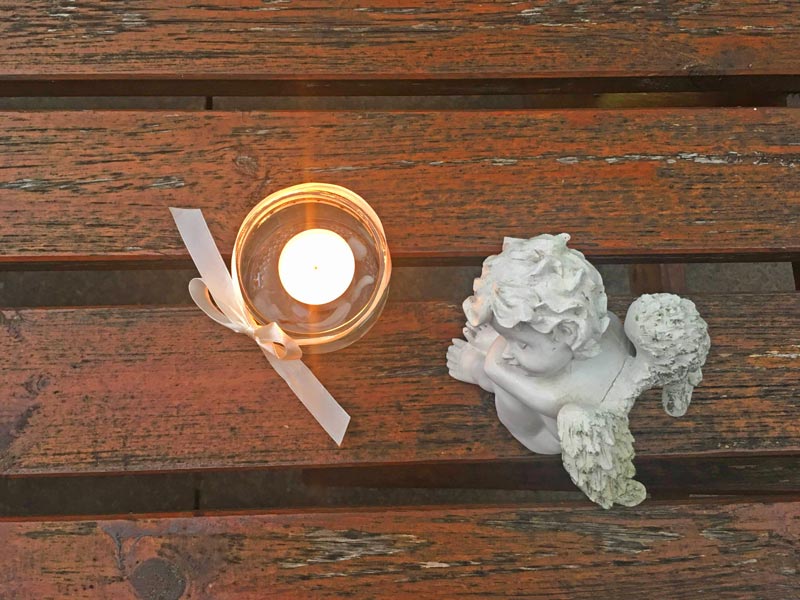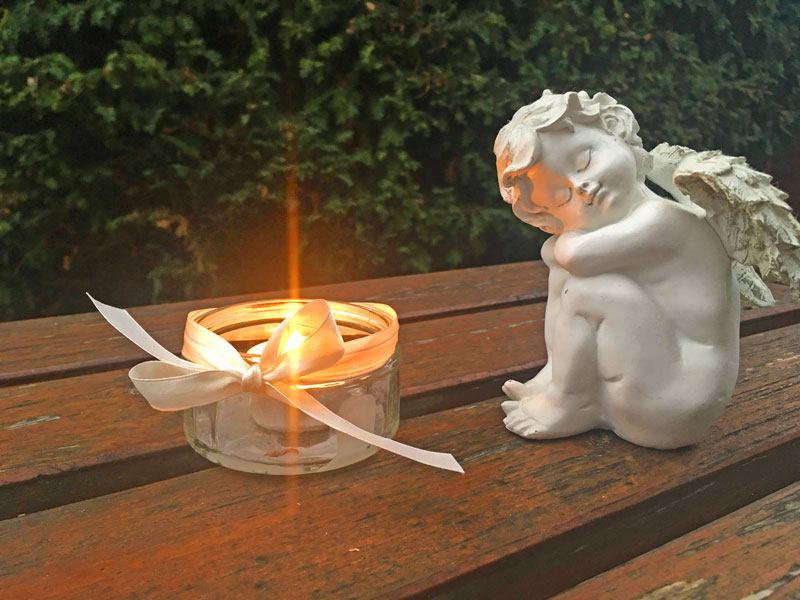I threw a picnic in our garden the other day. We were busy with all…
An English funeral
In loving memory of Richard
Death is part of life. Or it should be. When I suddenly and unexpectedly lost my Mum and then my Dad within the same year, I could not handle the situation properly and I found it was almost a taboo to talk about, although not long ago people’s approach to death was much more natural – even in the West.
This post is inspired by the sad fact that Bill’s Dad passed away on 22nd October. It might seem to be bizarre and odd to write about an English funeral, but I thought as we both lost our fathers in the same year and had to attend two funerals, why couldn’t I explain the differences on this blog. Funerals are equally part of a nation’s culture, which can be interesting and can help to understand a nation even more.
Although funerals appear in many English films like, Three Wedding and a Funeral, Love Actually, Bridget Jones’ Baby, Poirot films etc, funerals are different in reality, even if no funerals are the same. Here, I am only able to explain and refer to the one I attended the other week.

A quick summary about Hungarian funerals
In Hungary, whether it is a cremation or a burial, the earthly remains of the dead are displayed in the funeral home at the cemetery, which is nicely decorated with flowers and a framed photo of the individual is put on the table next to the flowers. In the case of an ecclesiastic funeral, the priest starts the ceremony in this room. In the case of a civil funeral the rhetorician (speaker) also makes his speech in this same room. Normally, there is an opportunity for the family or friends to make a farewell speech (eulogy) at this point which should not be too long. Then the funeral procession proceeds to the grave where the urn or the coffin is placed to the ground and where people pay their respect towards the dead and offer their condolences to the family. Depending on the traditions of the family, there might be a wake with some light bites and refreshments for the mourners. This tradition has its roots in an ancient ritual where people sacrificed animals to the dead. This is how the cult of the dead, a veneration of the death and the belief in spirits evolved. Perhaps we could say that up until the 1950s it was mandatory to have a wake after the funeral in Hungary. Funeral mass is either held at the funeral or after it in a church.
Now let’s see what an English protestant funeral is like
It was a cremation and as such the first and most important difference is that it has two steps. Let me explain what it means. The funeral or perhaps it is better to call it service was held in the chapel which was at a crematorium. Now do not think it is an ugly and scary place. The building is in a middle of a park, which is called the Garden of Remembrance, functioning as a cemetery really. At the beginning of the service the coffin was brought in to the chapel and placed in the altar which was separated by curtains – open at this stage. Yes, you read it correctly: cremation and coffin.
The service was held by a vicar who said prayers, read from the Bible and there were songs just like at a Hungarian funeral. What was different though is that members of the family equally stepped on the pulpit to make their speech (eulogy) which was – believe it or not – funny. The intention was to involve the congregation and encourage them to laugh and express their feelings. Milestones as well as funny stories of the dead person were mentioned, so that the whole event becomes rather a celebration of a life, instead of a sad occasion. At this point the film Love Actually sprung to mind where Liam Neeson played his wife’s favourite song and a slideshow of family photos on her funeral. I thought this was much more personal and human than our funerals which are mandatorily choreographed to be sad and depressed. “Wouldn’t it be better to celebrate the life of our beloved ones with some funny stories that everybody would remember…?” , I thought. Let me remind you: this is in the West, where people are said to be less open to spirituality. Of course this is still light years behind a funeral in New Orléans where the funeral procession is playing the dead person’s favourite song and people are dancing. The English protestant service seem to be the happy medium and much more flexible than the Hungarian funerals.

Having said flexible, the family requested people to wear bright colours at the funeral and not black. I can understand this request, at the same time, being a person who likes traditions for me black remains the colour of a funeral. However, it is just a question of what you are used to, I guess, so if you manage to get your head around it and attend a few funerals (rather not, but if you have to) you may get used to it.
There were some other good ideas such as
- No flowers but donations at the end of the service to two charities chosen by the family (Guide Dogs for the Blind and Dementia Research). All in all, flowers do fade in the end and the money they cost could serve a better and more important case. This might seem to be strange and unusual, however this was only a remembrance, so no flowers on the grave were needed anyway.
- There was a little booklet on every seat in the chapel with a photo of the person passed and it also contained the program of the service: poems, hymns, songs etc. This is a nice touch and it also comes handy should someone forget the lyrics of the songs. However, I thought it might be waste and unnecessary expense as at the end of the day who would want to keep such a thing at home… I don’t think this is something that one would keep happily but I might be wrong. (And indeed I am as Bill has just said, people in England do collect them – wow…)
- What is unbelievable to me is that everybody can arrange and pay for his or her own funeral in England upfront. You just go to the funeral directors and tell them what you want, pay for it and once you die, you can be sure, your funeral will be taken care of. This is something that is impossible in Hungary. Funeral directors come and go and the company might not be there by the time you die plus prices are going up all the time so nobody would commit to bury you at x price 20 years later…
When the vicar finished the service the curtains closed. The actual funeral would be days later when the urn with the ashes will be put into a grave. This will be only attended by the closest family members. I must admit, this is extremely strange for me because it just makes you go through the pain twice and breaks your heart again. So this kind of remembrance, or service is great, but would be better if the ashes were put into the grave right after it, I think.
At the end of the service people offered their condolences to the family at the doorway and then we went to a venue where a wake was organised with refreshments. I do think it is a good idea because if relatives have not seen each other for ages and made the effort to attend the funeral and travelled hours, then it is nice to be able to catch up a little bit in a civilised way, plus they can have a bite to eat before the return journey. For instance, I learnt from an English lady at the wake, that a Catholic funeral is very similar in England to ours, however, Bill believes even a Catholic cremation would have 2 steps.
Like I said, it might seem to be odd writing about an English funeral, but it is so different that it might be interesting for others. It is not better or worse, only different. So is our culture and our funerals. Although I am a person who follows traditions, if I could chose again what kind of funeral to chose for my parents, I would chose the English protestant, I think where you can sit down in a heated chapel and celebrate their lives with funny and lovely stories rather than standing in a cold funeral home and being mandatorily sad.

English traditions and beliefs regarding death and funerals
I have always loved folklore and it amazes me that there are some traditions and customs which can be equally found all over Europe or in different countries miles away from each other with completeley different cultures. You will find this applies to some of the below ones as well.
- In Victorian England if a married woman lost her husband she had to follow very strict rules. She had to retire from public life, wear black, veil her face and cover all mirrors with a black fabric at home and stop clocks (the latter two traditions can be found all over Europe). They even wore matching, black jewellery made of jet.
- Women in Victorian times had to wear black clothes for 2 years, then the only colours they were allowed to were in the next 6 months was grey, lavender or mauve. Men however mourned for 3 months only and had to wear a black arm band only.
- Victorians talked openly about death and mourning but sexuality was a taboo. Interesting that today it is the other way round…
- Before photography appeared the only way to remember a person was to have a painting of the person which was expensive. Therefore, people wanted to have a little piece of the person’s body which would have reminded them and it was the hair. Jewellery made of hair already existed in the 17th century for example a piece of braid on a ring. Later they wore pendants painted with a paint in which they mixed a powder made of the dead’s person’s hair or wore bracelets made of hair. This really seems to be bizarre but if I didn’t have a single photo of my beloved ones, I might want a piece of them as well.
- In the English folklore the wound of a murdered person were thought to bleed again if approached by the murderer. This appears in the Niebelungen Lied (ca 1200) and in King James I’s Daemonology (1597).
People should avoid stepping on a grave as it was said to be unlucky. Especially pregnant women had to be careful otherwise the child would be born with club foot. - The north side of the churchyard was reserved for strangers, suicides, unbaptised and stillborn babies.
Doors had to be opened when a person died or during the funeral to help the spirit to fly. (This can be found in many European countries as well.) - Rain on a funeral was considered to be lucky because they believed the heavens were weeping in sympathy.
Blessed are the dead that the rain rains on. (Wales, 1909)
Happy is the corpse that the rain rains on. (Ireland, 1865)
~
On the day of Richard’s funeral the rain was torrential so perhaps the journey was safe and secure and the heavens received him gladly.




Comments (0)